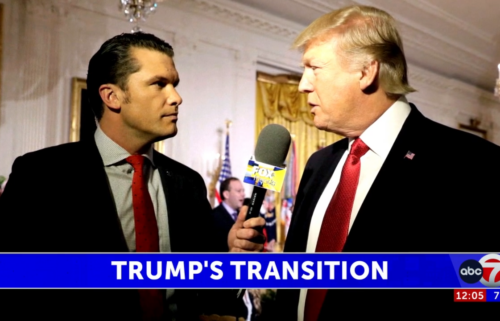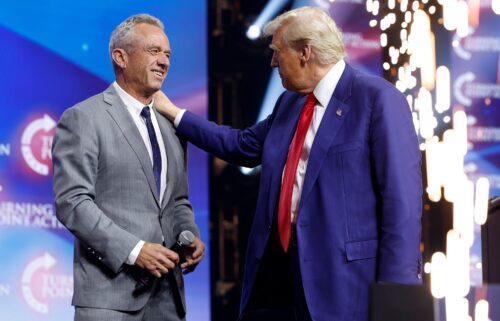US considers sending thousands more troops to Middle East to deter Iran

The Pentagon is considering sending thousands more troops to the Middle East as part of an effort to beef up air defense capabilities in the face of Iranian moves that include its recent transfer of short-range missiles into Iraq, CNN has learned from multiple defense officials.
The most realistic options include potentially sending 4,000 to 7,000 additional US troops to the region, the officials said.
The Iranian missiles could pose a threat to US forces in Iraq and potentially be moved to threaten Saudi Arabia as well, officials say. The need for additional air defenses could be met by combinations of ground-, air- and sea-based US forces.
The Pentagon officials said discussions underway now are focusing first on what additional military capabilities are needed to deter Iran and how long those assets and troops might be required.
Once those military capabilities are determined, that will determine how many troops are needed, officials say. No decisions have been made. They also say new deployments could start with an even lower number, somewhere in the range of 3,000 to 4,000 troops.
Threat stream
The news that the US might substantially boost troops in the Middle East because of Iran comes as the Pentagon told reporters Thursday that it is concerned about the “threat stream” coming from the country. CNN reported Wednesday that US intelligence agencies and the Pentagon in recent weeks have tracked the movement of a number of Iranian short-range ballistic missiles into Iraq.
News of the movement of Iranian missiles into Iraq came after CNN reported that there is fresh intelligence of a potential Iranian threat against US forces and interests in the Middle East, according to several US defense and administration officials.
In November, the US Navy intercepted a ship that it said was carrying Iranian weapons components bound for Yemen.
At the same time, France, Germany and the UK have flagged their increasing concerns about Iran’s missile program, alleging in a letter to the United Nations that Tehran has developed missiles capable of carrying nuclear weapons.
The changes in Iran’s military posture come as the country is trying to push back on protests in Lebanon and Iraq that could undermine its influence in both countries and deal with an explosion of discontent at home.
Leaders in Tehran are struggling amid destabilizing nationwide protests that have left hundreds dead and led officials to shut down the internet in an effort to contain the unrest. Iranians have been protesting a sharp hike in fuel prices, as the economy staggers under the Trump administration’s maximum pressure campaign.
President Donald Trump said Thursday that Iran is “killing protesters” and noted the internet clampdown at a lunch in New York for the United Nations Security Council. “They’re killing a lot of people, arresting a lot of their own citizens … the US stands by the protesters,” he said.
He added that the Iranian situation “could be fixed very quickly.”
Iran has blamed the unrest on US operatives, arresting eight people it said had received CIA-funded training in various countries under the cover of being citizen journalists, Iran’s official state news agency reported in late November.
The Trump administration’s special representative for Iran, Brian Hook, did not specifically mention Iranian citizen journalists during a briefing Thursday but said the State Department had received chilling video footage after Secretary of State Mike Pompeo called on Iranians to send reports about the protests and the regime’s reaction.
In the video, Hook said, Iran’s Islamic Revolutionary Guard Corps is heard spraying fleeing protesters with machine gun fire.
Speaking at the State Department, Hook said Iran is facing its worst political crisis in 40 years as these protests erupt across the country and also made the dramatic claim that the government has killed more than 1,000 of its citizens in response.
The figure is far higher than the toll estimated by groups such as Amnesty International, which earlier this week said 208 people had died, based on credible reports. Hook did not provide proof to back up his claim.
“This is the worst political crisis the regime has faced in its 40 years,” said Hook, who also serves as a senior adviser to Pompeo. “It appears the regime could have killed over 1,000 Iranians since the protests began … among those killed are at least a dozen children.”
Sophisticated weapons
Hook also condemned Iran’s continued missile development and praised the US Navy for its November interception of a ship carrying “sophisticated” weapons components, including air defense components and anti-tank missiles.
The Pentagon confirmed Wednesday night that one of its vessels had intercepted a ship in the Arabian Sea late last month that it said was carrying a “substantial” number of missile components believed to have been of Iranian origin.
Hook said the vessel was reportedly headed to Yemen and that the materiel on board was “the most sophisticated weapons seized by the US Navy to date during the Yemen conflict.”
“This discovery is yet more proof of Iran’s effort to inflame conflicts in the region,” Hook said. “It is also further evidence of how Iran repeatedly violates” a UN arms embargo on Yemen, he said.
A Defense Department spokesman, Cmdr. Sean Robertson, said Wednesday evening that on November 25 “a US warship conducted a flag verification boarding in the Arabian sea in accordance with international law of what was subsequently determined to be a stateless vessel, and discovered a cache of weapons and advanced missile components. An initial investigation indicates that these advanced missile components are of Iranian origin. A more thorough investigation is underway.”
The Pentagon announcements came a day after ambassadors from France, Germany and the UK alleged that Iran has developed nuclear-capable ballistic missiles, in a joint letter addressed to the United Nations secretary general officially released by the UN on Wednesday.
The ambassadors listed four examples of activity, adding that “Iran’s developments of nuclear capable ballistic missiles and related technologies is inconsistent” with a UN resolution restraining the country from doing so.
The European countries — all signatories to the 2015 Iran nuclear deal — have previously written to the UN about Tehran’s nuclear activity, claiming “these activities are the latest in a long series of advances in Iranian ballistic missile technology.” Iran’s missile program was not covered in the nuclear deal.
Iran is believed to possess the largest and most diverse ballistic missile arsenal in the Middle East, according to US intelligence assessments, with a substantial inventory of close-, short- and medium-range missiles that can strike targets throughout the region.




